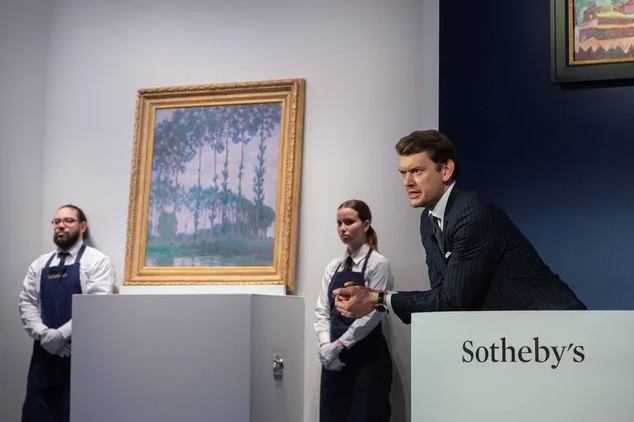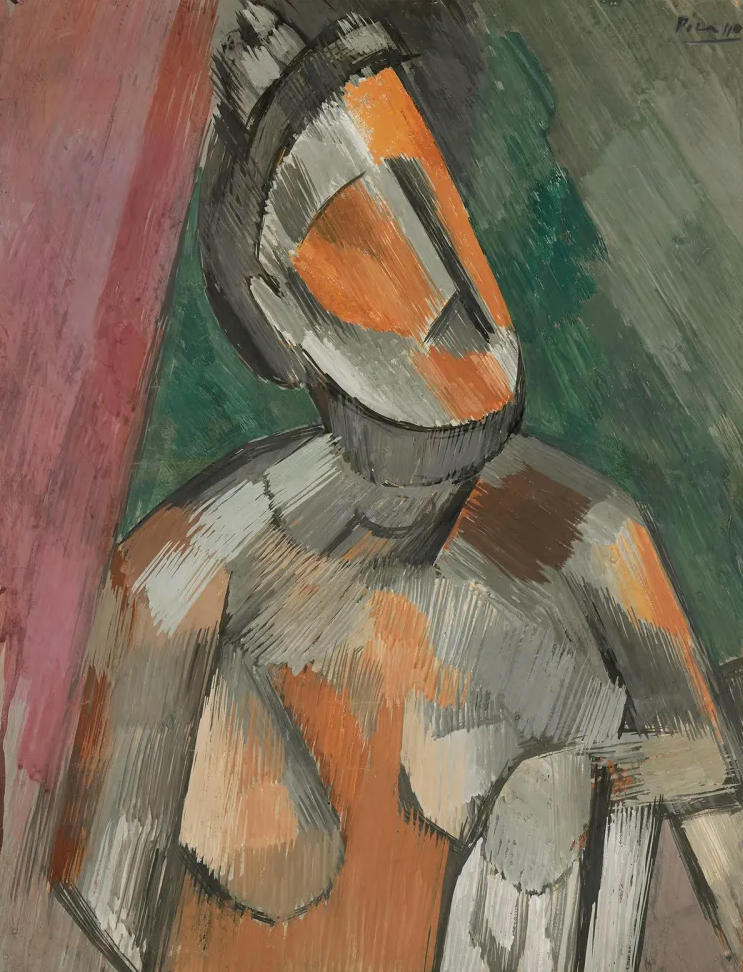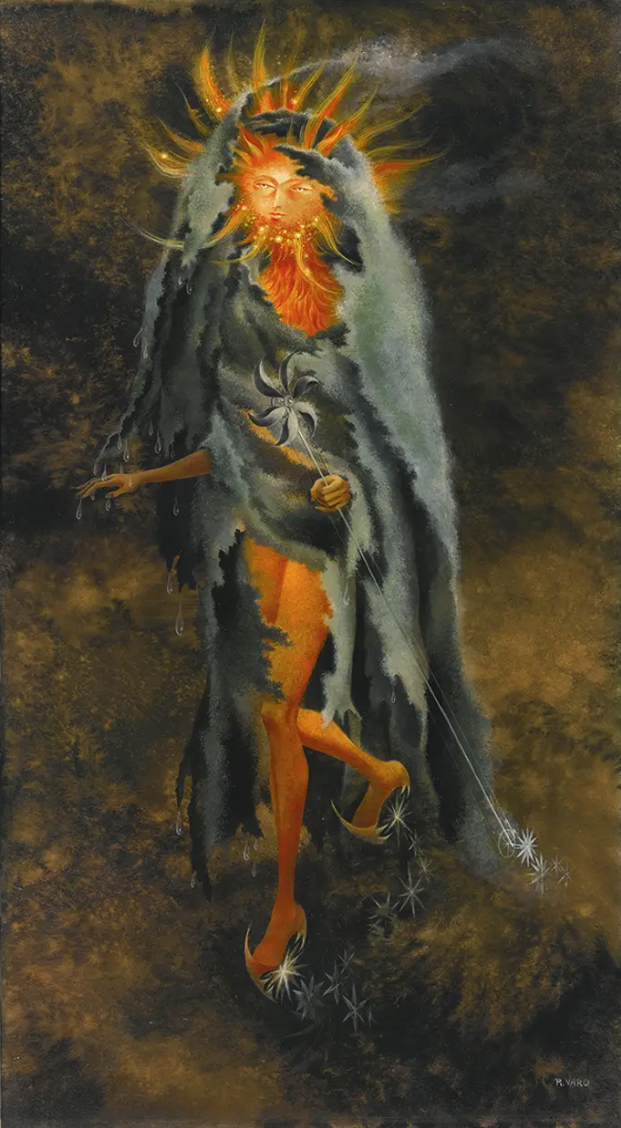
Sotheby’s auctioneer Michael Macaulay during the Modern Evening Auction, November 2023. Courtesy of Sotheby’s
The auction, spanning Monet to Miro, made $190.3m—just above its low estimate—and was preceded by the record-breaking sale of a Ferrari car.
Despite a rash of eight withdrawn lots at the 11th hour, yesterday’s (13 November) Modern evening sale at Sotheby’s New York soldiered on to a modestly affirming total of $190.3m ($223.6m with fees).
The pared-down roster of 33 lots carried a revised pre-sale estimate of $179.4m-$248m (those eight withdrawn lots carried a combined pre-sale estimate of $19.3m-$26.7m). Only two lots were bought in, for a slim buy-rate of 6.1%. Fifteen of the entries, or just under half, were backed by a combination of irrevocable bids and house guarantees. The total trailed last November’s result of $253.3m (including fees).
The evening kicked off with the auction debut of Hedda Sterns’s Road #7, an Abstract-Expressionist era oil and spray paint on canvas work (1956) that made a record $650,000 ($818,000 with fees) against its $600,000 high estimate.

Pablo Picasso’s Buste de Femme
This was followed by Pablo Picasso’s petite Cubist still life, La Glace (1912), which realised $3.1m ($3.8m with fees). It was one of seven Picasso works offered from various owners and epochs last night. The most expensive of these was the lusty and code laden Compotier et guitare (1932), a sort of valentine ode to his young mistress and muse Marie-Thérèse Walter. The painting went to a telephone bidder for $21m ($23.4m with fees), against an unpublished estimate in the region of $25m. It last sold at auction at the same house in New York in May 2000 for $9.9m; this time around, it was backed by a third-party guarantee.
The earliest of last night’s Picassos, Buste de Femme, from the spring of 1909, featured the Cubist-styled visage of his then lover, Fernande Olivier, and was executed in gouache on paper mounted on board. It sold to another telephone bidder for a disappointing $12m ($13.6m with fees), well below its $18m to 25m estimate. Clearly, the confidential reserve was dropped down far enough to satisfy the irrevocable bidder.
One of the evening’s top lots was Marc Chagall’s romantic fantasy, Au-dessus de la ville (1924). Depicting an entwined artist couple floating high above the rooftops of their village Vitebsk, in Belarus, it realised $13.3m ($15.6m with fees), comfortably within its $12m to $18m estimate.
In a major deaccession move by the Art Institute of Chicago, a long-held and prominently exhibited painting by Balthus, from the Joseph Winterbotham collection, came to the block, backed by a third-party guarantee. La Patience (1943) depicts a young woman leaning over a spindle-legged card table playing solitaire. It went to the prominent US dealer Jeffrey Deitch for $12.5m ($14.6m with fees), which was within its $12m to $18m estimate.

Joan Miro’s sculpture Projet pour la céramique murale de l’Unesco Le Mur du soleil (1955)
A group of works offered from a Japanese collection—dubbed for the sale “Artistic Reverie”—included Joan Miro’s sculpture Projet pour la céramique murale de l’Unesco Le Mur du soleil (1955), which was commissioned for the Unesco headquarters in Paris. It sold for $1.2m ($1.5m with fees), within its $1.2m to $1.8m estimate.
The evening’s largest estimate price came courtesy of Monet’s lustrous Peupliers au bord e l’Epte, temps couvert, signed and dated from 1891, which Sotheby’s hoped to sell for $30m to $40m. And the house just about managed to, with the work hammering to a telephone bidder in Asia for $26.5m million ($30.7m with fees). The painting last appeared in public at the traveling museum exhibition Paul Durand-Ruel and the Modern Art Market, which came to the National Gallery, London, the Philadelphia Museum of Art and the Musee D’Orsay, between 2014 to 2015.
Another entry from that Japanese collection, Cézanne’s page-sized oil on canvas, L’Assiette bleue (1879-80), groaning with ripe fruit, sold to the London dealer Angela Nevill, also known as Lady Angela Keating, for $5m ($6m with fees). The Artistic Reverie group realised $50.8m ($59.8m with fees).
But it was Monet who was last night’s star, with two further works of his achieving strong prices. Le Moulin de Lemitz (1888), from the descendants of the storied Impressionist collectors Bertha and Potter Palmer, depicted a grain mill in a small village one mile away from the artist’s home in Giverny. It was featured in the Art Institute of Chicago’s Monet and Chicago exhibition in 2020 to 2021 and brought a robust $22m ($25.6m with fees), crushing its pre-sale estimate of $12m-$18m. Remarkably, the Palmers acquired the painting in Paris in May 1892 and it had stayed within the family until last night.
The London dealer Alon Zakim, was one of several underbidders for that work. When asked by The Art Newspaper as to why he dropped out of the race, he said, with a high-wattage smile, “I’m a dealer and I have to set a limit and stick with it”.
A third Monet, Soleil sur la Petite Creuse (1889)—one of 24 paintings the artist executed in the rugged terrain of the Creuse valley in central France—sold for $7.2m ($8.6m with fees).
On the sculpture front, Le Lys (1964), Alexander Calder’s airborne mobile with 12 petal-shaped elements in red, black and white, made $1.8m ($2.2m with fees). And Alberto Giacometti’s slender, 121cm-high posthumous bronze from a 1973 casting, Femme de Venise VIII, sold for $11.2m ($12.6m with fees). The consignor of the Giacometti acquired it in 1987 from Galerie Jan Krugier in Geneva Switzerland.
Like the majority of works on offer this evening, few bore auction history and many of those that did had last come to the block more than 20 years ago. This shows that so-called ‘fresh’ pieces are preferable—and necessary—in a more discerning, or downright picky, market.

Astro errante (1961) by Remedios Varo
Astro errante (1961) by Remedios Varo, the exiled Spanish Surrealist who resettled in Mexico City after fleeing from the Spanish Civil War, depicts a cosmic figure wrapped in a frayed blue garb. It brought $1.4 m ($1.7m with fees). It last sold at auction at Christie’s Latin American sale in New York in May 1993 for $206,000. The underbidder was the president of the Alexander Calder Foundation, Alexander Rower. “I was going to go for one more bid, but Elan, my wife, stomped on my foot,” he said.
Although Sotheby’s auction was dominated by French artists, Americans also had skin in the game, as evidenced by Mark Rothko’s shimmering abstraction in deep shades of blue, Untitled (1968). The work, executed in oil on paper laid down on canvas, soared to an estimate-busting $20.5m ($23.8m), selling to the New York dealer Andrew Schoelkopf. It was a remarkable, and record, price for a work on paper. The proceeds of the sale will benefit the Memphis Brooks Museum of Art in Tennessee.
“It’s a real collectors’ market,” said Charles Stewart, Sotheby’s chief executive, moments after the auction. “It’s not a market of speculators and you see that reflected in the results.”
Although the sale was hardly heart-pounding, a single lot canapé from Sotheby’s automotive division, RM Sotheby’s, offered just prior to the Modern evening auction, provided lots of noise and horsepower. A rare-to-market and race-proven Ferrari 250 GTO from 1962 took the checkered flag at $47m ($51.7m with fees). Although it was estimated to fetch in excess of $60m, the result was still the highest price for a Ferrari sold at auction.
Nonetheless, not everyone was impressed. The contemporary art collector Larry Warsh, who was part of the crowd observing the sale, said: “I’d rather have a Keith Haring car than a Ferrari.”